Review: Nokia Lumia 900 for AT&T
Apr 3, 2012, 8:00 PM by Eric M. Zeman
updated Apr 9, 2012, 4:38 PM
The Lumia 900 is Nokia's most important smartphone launch ever. Microsoft and AT&T have a lot riding on this device, too, as its success will shape the future of Windows Phone in the US and beyond. With specs to spare, Nokia goes for the no-nonsense approach in with its flagship smartphone.
Form
Is It Your Type?
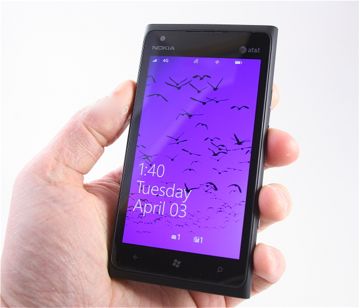
This is it. With the Lumia 900, Nokia is going for broke. This flagship Windows Phone from Nokia hits all the key specs for a modern smartphone: huge screen, powerful camera, support for 4G, and a modern, edgy design. With aggressive pricing from AT&T, the Nokia Lumia 900 is tempting for many reasons and poised to be a hit. If you're even marginally interested in a Windows Phone device, this is the one you should look at first.
Body
With the Lumia 900, Nokia has taken the design language seen on its iconic N9 and Lumia 800 smartphones and kicked it up a notch. It is bigger and (somewhat) better is almost every way.
The 900, which will ship in three colors (black, cyan, white), is made of polycarbonate. Polycarbonate is a fancy name for really strong plastic. After playing with the Lumia 900, Lumia 800, and HTC One X, I can understand why it appeals to hardware makers: it is lightweight, resistant to damage, and looks/feels good. We tested the black 900, which has a matte finish on the polycarbonate, but the cyan and white variants have a glossier look and feel to them.
The 900 is a big phone, there's no denying that. Any device with a 4.3-inch display is going to have a significant footprint. The industrial design of the 900 stretches that footprint with a large bezel and blocky appearance (when viewed from the front). The polycarbonate shell is solid, and wraps around the top, bottom, and side edges of the 900 to meet the outer rim of the display. The display has a raised edge that I don't particularly care for, as it interrupts the flow of what would otherwise be an entirely smooth device. The sides of the 900 are gently curved and the portions of the shell above and below the display taper down to meet the top/bottom edges. It's unique, and gives Nokia's Lumia 900 its own look in a crowded field of me-too smartphones.
It's a satisfying device to hold. The materials and the shape together are a comfortable combination. It's not too heavy, but I wish it were slightly thinner. It's 11mm thick compared to the HTC One X's 9mm. Phone makers really need to shoot for thicknesses less than 10mm in my book. It'll easily slip into a pocket, but the sharp-cornered top and bottom surfaces will make themselves known as you move throughout the day.
There's not much on the front face other than the display. You can just make out the user-facing camera within the bezel above the display, and the three typical Windows Phone buttons are below the display in capacitive form. The buttons work well, but don't light up often enough; it can be hard to find them in the dark.
There are no controls or ports on the left side and bottom edge of the phone. The right side is full of silvery buttons, including the dedicated camera key, screen lock key, and volume toggle. They are all easy to find, as their color and texture differs from that of the polycarbonate. The buttons each have good travel and feedback, but I am troubled by the position of the screen lock button. It falls right in the center of the right edge, and I found that the palm of my hand accidentally pressed it when I was gripping the phone. The result is that it wakes up the screen far more often than I want it to.
The 3.5mm headset jack, microUSB port, and SIM card slot are all on the top edge of the 900. The SIM card slot is a fussy little thing, but Nokia doesn't expect you'll be ejecting it all that often.
We can add the 900 to the (sadly) growing list of devices that has a built-in battery. It is not accessible at all by the owner. The 900 also does not have a user-accessible memory card slot. The 16GB baked into the phone is all you get for storing media.
The overall effect of the 900's design and materials gives it a slightly chunky look, but I still find it much more appealing than what other handset makers have done for Windows Phones. It stands out, and that's what Windows Phone needs right now to compete with Android and iOS devices.
The Three S's
Screen
The 900's display is typical for a Windows Phone. It measures 4.3 inches and includes 800 x 480 pixels. It's no Retina Display in terms of pixel density, but it's still good for most users. Nokia employs something called ClearBlack to make the OLED panel stand out. It's inky black, but bright and colorful when it needs to be. It's kind of crazy how readable the display is outside under bright sunshine. I was able to read emails — small text on a white background — with no problem under direct sunlight.
Signal
The 900 works with AT&T's nascent LTE 4G network and its much-more-widely-available HSPA+ network. The 900 performed in-step with other AT&T devices. For example, when under HSPA+ coverage, it exactly matched the signal strength of other AT&T phones. I didn't have any trouble making calls, nor receiving them, no matter what the signal indicator read. HSPA+ delivered good internet speeds during my time with the 900, and it didn't matter if the network coverage was weak or strong, the 900 was consistently good. With respect to LTE, in the time I spent testing the 900 in NYC, it was very fast. The connection waffled between HSPA+ and LTE a bit, but when it showed LTE it was lightning-bolt quick.
Sound
True to Nokia's legacy, the 900 is an excellent voice phone. The earpiece is plenty loud for most any environment, and the calls I made were clear of noise and interference. The speakerphone was also nice and loud, though voices were slightly more prone to a bit of distortion when routed to the speakerphone. The ringtones can be set loud enough that others might mistake them for emergency vehicles. In fact, I'd avoid setting them too high, as you're likely to wind up with an earache or headache. Don't turn them off entirely, though, as the vibrate alert is too weak.
Battery
The 900's internal battery is good for a bit more than a full day's use. With two email accounts, plus Twitter and Facebook tugging at AT&T's network throughout the day, the 900 still had plenty of power left at dinnertime. I was able to download a dozen applications whilst watching TV and stay on top of my RSS feed all evening without denting the battery life. This was under HSPA+ coverage only. In the short time that I tested the 900 under LTE coverage, I did notice the battery drained at a faster rate.
Basics
Menus
The Lumia 900 runs Windows Phone 7.5 Mango. Since all versions of Windows Phone look and behave the same across devices and carriers, the 900's menus and user interface are more or less identical to WP7 handsets we've already reviewed. As far as modern smartphones go, Windows Phone is about as simple as it gets with respect to the user interface.
Your first experience with WP7 will be the lock screen. Notifications for items such as missed calls or messages will appear along the bottom of the screen. Slide the screen up to unlock it. My one frustration with notifications is that they don't really give you any information other than an unread count. Three missed calls, and 14 new emails? OK, but what about a preview of those messages, which every other platform offers? Also, there are no lock-screen shortcuts other than the press-the-camera-button-to-launch-the-camera trick.
The home screen is made up of two vertical columns of square and rectangular tiles. Some of these are "live" and will update in real-time with content, others are static. The tiles can be applications, inbox folders, web site shortcuts and so on. You can mix them up and rearrange them, and pin dozens of them to the home screen. Slide the home screen to the left to access the system menu, which offers a list of all the apps/services on the device and the controls for the phone's behavior.
Settings of individual apps can be tweaked from either the system tools or within the app directly. In order to adjust app settings, look for the three little dots (probably at the bottom of the screen). This obtuse little icon is what you need to press to get at the settings.
There are no true widgets for Windows Phone, nor are there multiple home screens. You get one home screen with widget-y live tiles, and that's about it.
Worried that the Lumia 900 has a single-core 1.4GHz Qualcomm Snapdragon S2 processor? Don't be. Microsoft and Qualcomm have worked together to optimize the heck out of the code. Even with a single 1.4GHz engine, the 900 absolutely flies. All applications, screen transitions, and so on were quick and smooth.
Calls/Contacts
Calls
The phone app is a simple affair reached via one of the home screen tiles. You can put the tile anywhere you want on the home screen or even remove it entirely. Firing up the phone takes you to the call history first. In-call options aren't surprising, and let you add a line, mute the microphone or head on over to the speakerphone. For numbers you call frequently, feel free to pin them to the home screen, which allows you to dial them without opening the phone app first.
Contacts
Microsoft doesn't want you sorting through contacts, it wants you interacting with people. That's what the contact app is called the People Hub. What's neat about the People Hub is that it adds social networking to what might otherwise be a dull list of phone numbers and email addresses. Instead, it offers a look at recent status updates, recent photos, and recent calls/messages received from those in your list. That includes content from Twitter, Facebook, and LinkedIn, which can all be synced with the People Hub.
Individual contacts may be pinned to the start screen if you wish, and the contact cards hold reams of data and make it easy to send messages, start calls, or fire off emails. It's one of my favorite contact apps on any modern smartphone platform.
Messaging
Windows Phone covers all the messaging must-haves. The platform offers email, SMS/MMS, social networking, IM, voicemail, and so on.
The email application is particularly powerful. Of course it works natively with Outlook and Exchange, but you can also mate any IMAP or POP email service to the device, including Gmail, Yahoo, Hotmail, and email from other providers. I like the way the email client treats threaded conversations.
The SMS/MMS client is fine and also does double-duty as the IM client for Windows Live. Conversations are threaded, and media such as photos or video are embedded inline with the text. Google Talk, Yahoo, AIM? Um, nope.
The biggest piece of the messaging pie with Windows Phone and the 900 is social networking integration. As noted above, the platform natively supports Facebook, Twitter, and LinkedIn. This lets the user push content from the browser to Facebook, or from their photo album to Twitter, or from the SkyDrive to LinkedIn. It's all easy and seamless and works with but a few swipes and presses.
Beyond the native integration, you can of course use these social networks in their own, dedicated applications. Facebook and Twitter, in particular, make strong use of the Metro UI concept that Microsoft has adopted. Facebook for Windows Phone is close to being on par with the client offered to Android and iOS devices, but Twitter for Windows Phone is a decrepit app that sorely needs to be updated.
Extras
Media
The heart of the 900's media experience is Microsoft's Zune software. The music and video apps are one-in-the-same, as is the Zune content store, which also ties into the Windows Marketplace for Mobile. They are all accessed from the same spot. It also supports podcasts and internet radio services.
One cool thing that Windows Phone now does is recognize all the related applications and pile them into one spot. You may have downloaded Slacker, Vevo, and Rhapsody on your own, but you'll see all of them in the Zune music and video hub.
The Zune content store is a fine place to shop for music and videos, though I prefer to sideload my own (which I have to do with the Windows Phone Connector for Mac application). My favorite feature of the media player is that it uses the data tagged to music and video files to pull down info and details from the Zune store. The application saw that I loaded the newest Lamb of God album on the phone and automatically pulled down the bio for LoG and a list of the band's other albums for sale in the Zune store.
Music sounds great pumped through my favorite headphones, and video looked great on the screen. I do wish the 900 (and Windows Phone) played better with my iTunes video content, though.
Camera
Camera
The one action that *might* qualify as a lock screen shortcut is the camera. As with all WIndows Phones, you can launch the camera even when the 900 is asleep by pressing and holding the camera button. The camera button is a two-stage button, and you have to depress it all the way to get the camera to open from the lock screen. (It's worth pointing out that you can disable this feature if you want to). This feature isn't fast enough, though. It takes at least three seconds, if not four.
Tools within the camera are about what you expect from a modern smartphone. All the controls run down the right side of the viewfinder. At top is a button to switch to the video camera. Below it is a button that activates the user-facing camera. Then there's a large strip for zooming in/out (the volume toggle, by the way, does *not* zoom the camera). The bottom-most button opens the full settings menu.
The 900 lets users adjust a number of parameters, including scenes (beach, candlelight, macro, night, snow, etc.); white balance, exposure, ISO, metering mode, effects (sepia, black & white) and more.
In order to get the 900's full 8 megapixels, you'll need to capture in a 4:3 aspect ratio. If you want to pictures to be the same shape as your TV, you have to choose the 16:9 aspect ratio, which is 7 megapixels.
In all, the camera's tools are fine. I just wish the user interface were a bit speedier. It's the one app on the entire device that doesn't run as fast as it should.
Pictures Hub
Microsoft places a lot of importance on pictures. The Lumia 900, as with other Windows Phones, doesn't have a photo gallery or album per se, it has the Picture Hub. The Hub spans the entire device, and specifically targets apps such as social networks. It pulls in photos from all these and mashes them together into a masterful repository that lets you explore (nee, stalk) all your contacts' photographic exploits. In other words, sharing your pictures is as easy as possible.
But what can you do with individual photos? Sadly, very little — at least, directly. The only editing function the 900 offers is an auto-enhance. This generic tool attempts to balance out contrast, exposure, and so on. It's rather useless.
However, the gallery can see other applications on the phone that might be able to interact with photos, such as Nokia's new Creative Studio. Creative Studio, which is a free download from the Nokia-only portion of the Marketplace, is a lot of fun. Think Instagram for Windows Phone. You can use it to apply all sorts of filters to creative vintage effects. Perhaps the most entertaining feature is the "face warp" tool, which lets you distort the faces of your best friends into misshapen ghouls.
Photos/Video
Photos
Five years ago, the Nokia N95 was the world's best camera in a cell phone. As much as Nokia might want me to, I cannot say the same of the 900's camera. Sure, it captures pix at 8 megapixels, and boasts Carl Zeiss optics, but I've seen better results from 5-megapixel cameras with no-name optics. It's good, but not great. I saw too much grain in the images I captured, inaccurate color, and a lack of really sharp focus. The camera had a hard time balancing out scenes with both light and dark regions, and images often took on a yellow tone. Color me red, I am disappointed with the 900's camera.
Video
The quality of video is on par with that of the images. It's OK, but not great. The 900 had a hard time sorting out exposure, and the white balance and colors looked off to me. Focus was OK, and the motion looked good, but sound quality was muffled and not clear at all. Argh, Nokia.
Browse/Customize
Internet Explorer for Windows Phone is a decent browser, though I find it's not quite up to par with the browsers offered by Android and iOS. Even so, it pulls down web sites lickety-split over AT&T's HSPA+ and LTE networks. It renders HTML sites well, though I don't care for the font used by the browser. You can set it to prefer mobile-optimized sites, but you're better off just letting it tackle the full HTML sites.
The address bar is at the bottom of the screen instead of the top. I still can't get used to this, but I am sure it doesn't bother most people. The browser doesn't offer forward or back buttons; only stop or refresh. You have to press the three dots to the right of the address bar to access the full settings/tools. Web pages can be pinned to the start screen or easily shared via social networks.
Speed freaks need not worry, it's fast no matter what network — Wi-Fi, HSPA+, LTE — you connect it to.
Customize
In order to really customize Windows Phone, you have to be creative. The base items that can be altered include the lock screen wallpaper, the color of the home screen tiles, and the color of the background. The home screen tiles can be set to just a handful of simple colors, such as red, blue, green, purple, magenta, etc. The background can be set to either white or black. Other than that, you can only mix up the live tiles and hubs that are pinned to the home screen and set custom ringtones. As noted earlier, there is only one home screen with Windows Phone, and there are no widgets.
Extras
Apps
There's a Nokia-made application called App Highlights on the 900. This app is tied to the Windows Marketplace for Mobile and offers a rotating array of Nokia-recommended applications for download. It's OK. There are plenty of AT&T-branded apps on board, such as Code Scanner, Navigator, Radio, and U-Verse, too. The Marketplace for Mobile is a fine app store, though I wish it were easier to weed out non-U.S. market apps (i.e., way too many Chinese-language apps show up in search results).
Bluetooth
The Lumia 900 supports the usual set of Bluetooth profiles. I had no trouble at all pairing with headphones or my car. Calls sounded really good through both mono headsets and my car's hands-free system. The stereo Bluetooth profile also worked well, and I was able to push pictures to my PC with no problem.
Clock
The 900 can be used to check the time, but it takes a wee bit of getting used to. The font used for the clock (and date) is white and too thin. Choose your wallpaper carefully. It stands out nicely on darker wallpapers, but makes telling the time really difficult if you go with something too light. There are no ways to control or alter the position of the clock on the home screen.
ESPN
The ESPN Hub is any sports nut's dream app. It's full of content from U.S. sports leagues, such as NCAA Basketball, NFL, MLB, NBA, and so on. It can be used to check scores, see upcoming game schedules, dive into social media and sports talk, as well as scan headlines and read in-depth articles. It's the best sports app I've encountered on any smartphone platform. Well done, Nokia.
Nokia Drive
Nokia is serious about getting you from Point A to Point B. The Lumia 900 ships with Nokia Drive, Nokia Maps, and Nokia Transit. Nokia Drive is used for turn-by-turn navigation when driving. Nokia Maps is a full-feature mapping service with access to points of interest, arial views, and 3D renders. The 3D maps view lets you adjust the angle of view and is a really neat way to view the surrounding landscape and get a perspective on how the map relates to the real world. For point-to-point navigation, you can choose from a range of different voice styles (female voice w/UK accent is the default). Maps can be set to day or night mode, landmarks such as gas stations are visible. Nokia Transit will probably be less useful for most U.S. citizens, but those who live in NYC, Chicago, Boston, D.C., and other cities with extensive transit systems will surely benefit from its ability to get you from here to there on trains and buses. The best part is Nokia Transit works even when it can't access the network (such as when you're underground on the subway). Pair these apps with an excellent GPS radio that pinpoints the Lumia 900 in a blink, and you have a killer navigation tool.
Wrap-Up
The Nokia Lumia 900 is the best overall device I've seen from Nokia in years. It doesn't hit every nail on the head, but it's a strong framework on which I hope to see Nokia build further.
The 900 really gets the basics right: it has great hardware, an excellent display, solid signal/voice performance, and the battery even manages to impress for a 4G device. The only limitation I saw in the hardware was the camera, which simply isn't as good as it needs to be to compete with other flagship devices in the market.
On the software side, Nokia didn't do much to spruce up Windows Phone, but it is a capable platform that takes a different approach from Android and iOS. It is speedy, efficient, just not as customizable as Android.
In the world of Windows Phone, the Nokia Lumia 900 is as good as it gets for the moment.

Comments
A swing and a miss from Nokia
1. The screen has a really crappy bezel around it. This totally ruins the aesthetic of the phone. Quite frankly, this lack of attention to detail is what separates Apple from HTC, Samsung, etc. If Nokia is going to distinguish themselves, they need to pull out the stops on *all* of their hardware expertise and not just phone it in after they get 80% of the way there.
2. The tolerance of the SIM tray is pretty bad by iPhone 4s standards (which are super tight.) It always looks misaligned, though the dark color hides it, it looks pretty bad in the cooler colors.
3. The texture is a lot cheaper feeling than the N800. This isn't quite Samsung-gr...
(continues)
bluecoyote said:...
Compared to the N800, there are too many corners cut with this supposedly high-end device.
1. The screen has a really crappy bezel around it. This totally ruins the aesthetic of the phone. Quite frankly, this l
(continues)
I really find the whole aesthe...
(continues)
(continues)
bluecoyote said:...
Compared to the N800, there are too many corners cut with this supposedly high-end device.
1. The screen has a really crappy bezel around it. This totally ruins the aesthetic of the phone. Quite frankly, this l
(continues)
Nokia missed the opportunity...
Being an T-Mobile customer, I wanted to try the 800 or the 900 phones, but neither of them support T-Mobiles radio frequencies and your stuck downloading content at 2G speeds.
You lost a customer, Nokia. And no, I don't care for the 720:
(continues)
Amusing
Thank you for promoting Nokia.
Question for you Eric


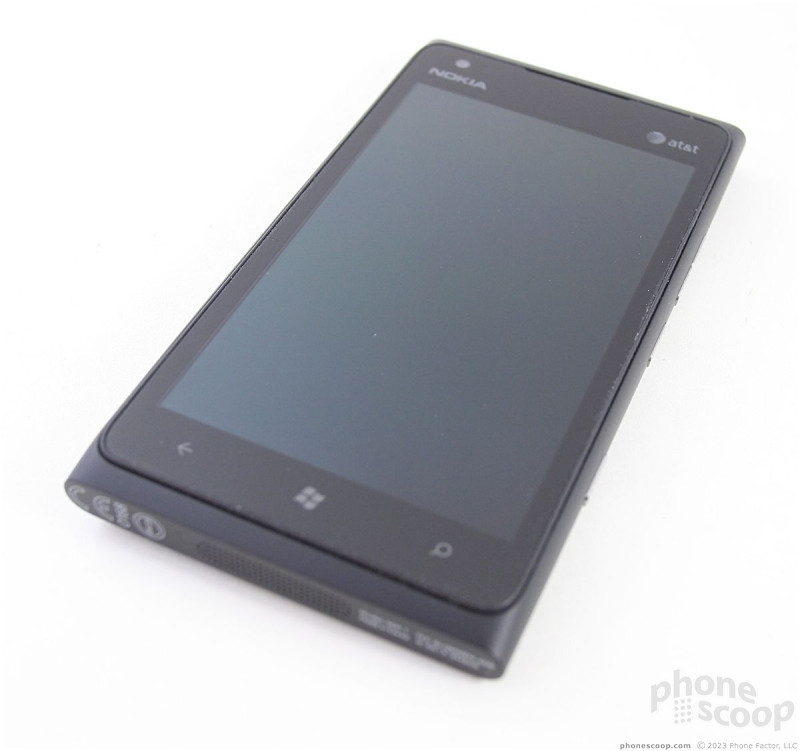














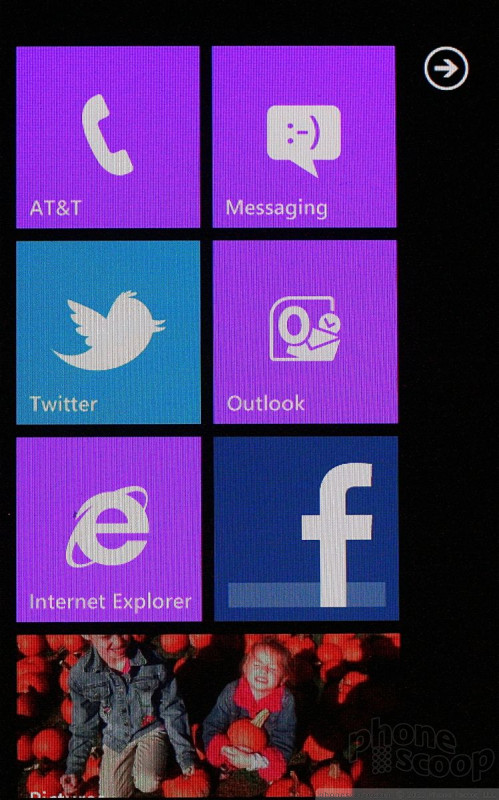







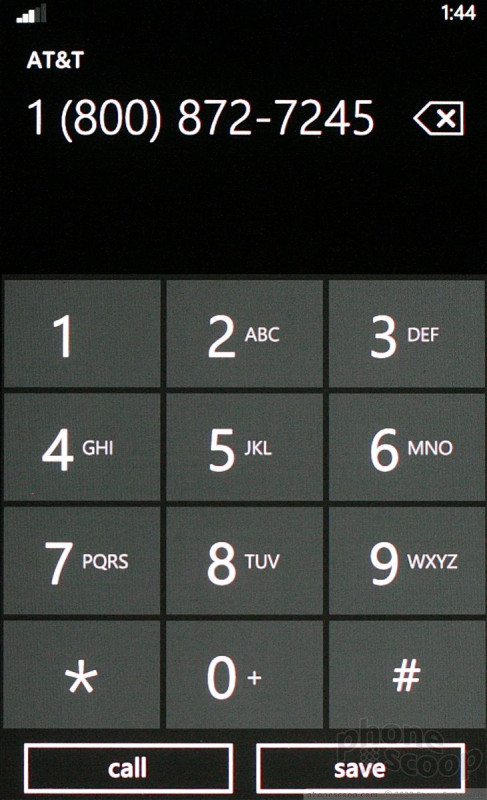






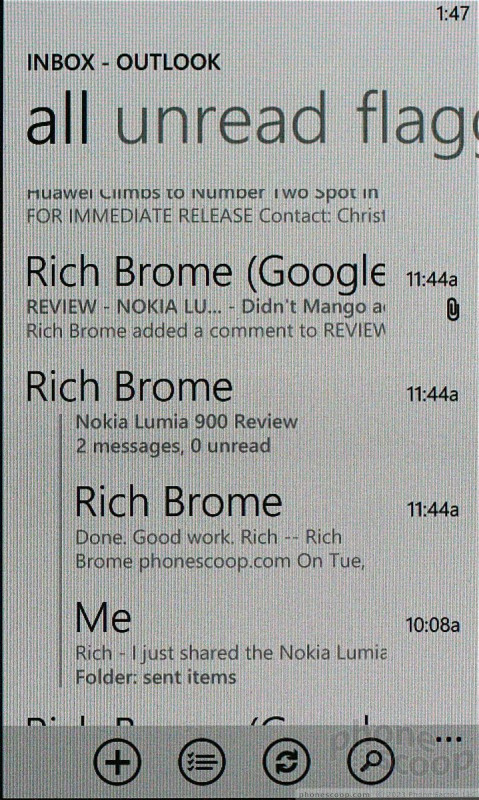









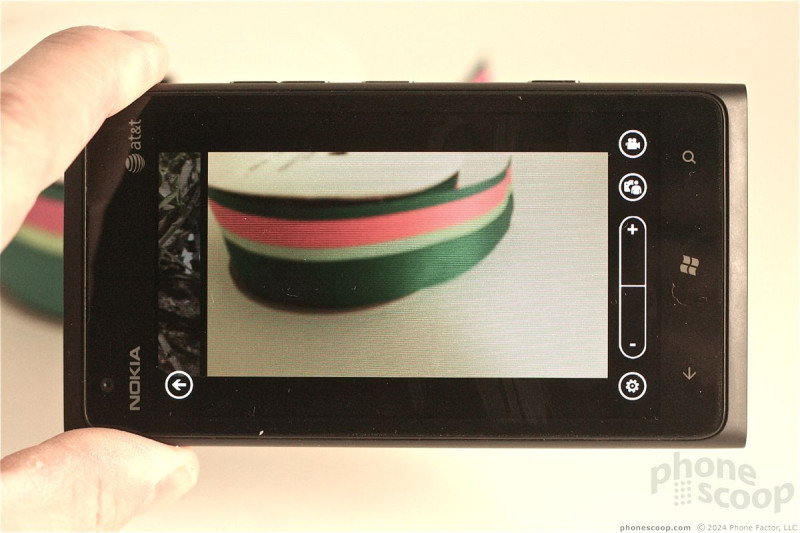




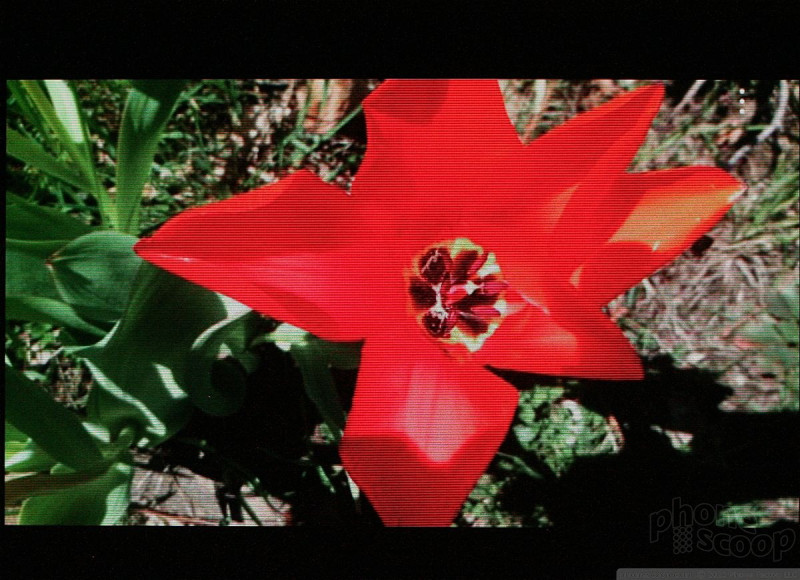







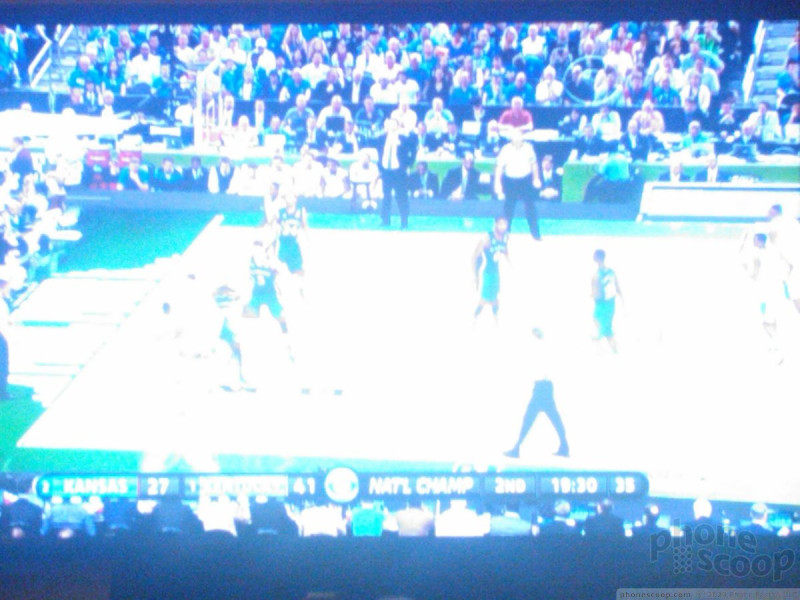















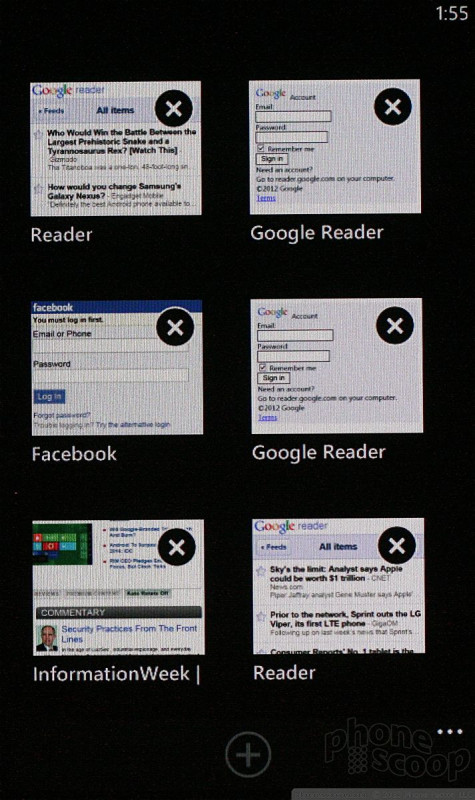



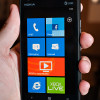 Hands-On: Nokia Lumia 900
Hands-On: Nokia Lumia 900
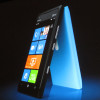 Liveblog: Nokia Lumia 900 for AT&T
Liveblog: Nokia Lumia 900 for AT&T
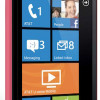 AT&T to Sell Pink Lumia 900 Starting July 15
AT&T to Sell Pink Lumia 900 Starting July 15
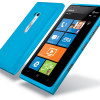 Nokia Makes the Lumia 900 for AT&T Official
Nokia Makes the Lumia 900 for AT&T Official
 Nokia Lumia 900
Nokia Lumia 900





